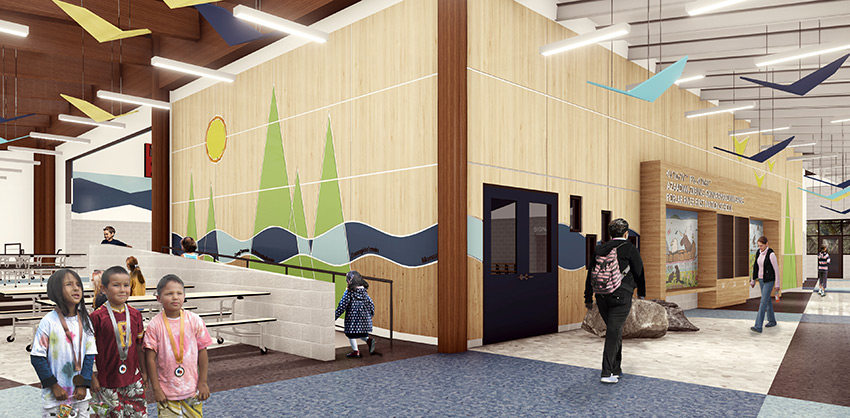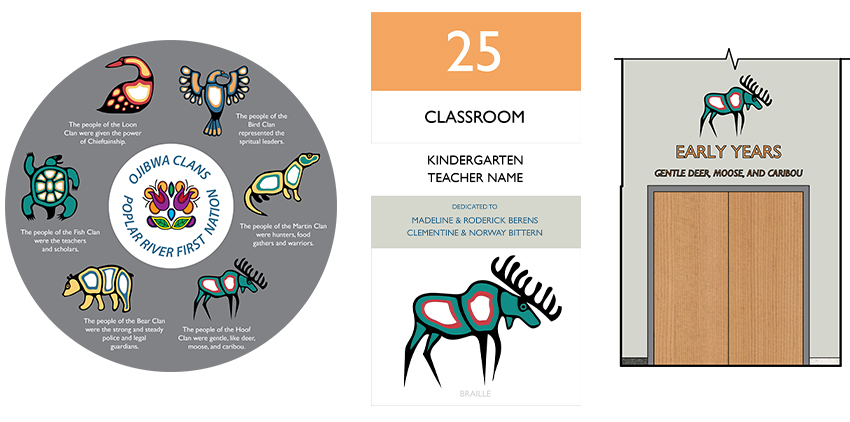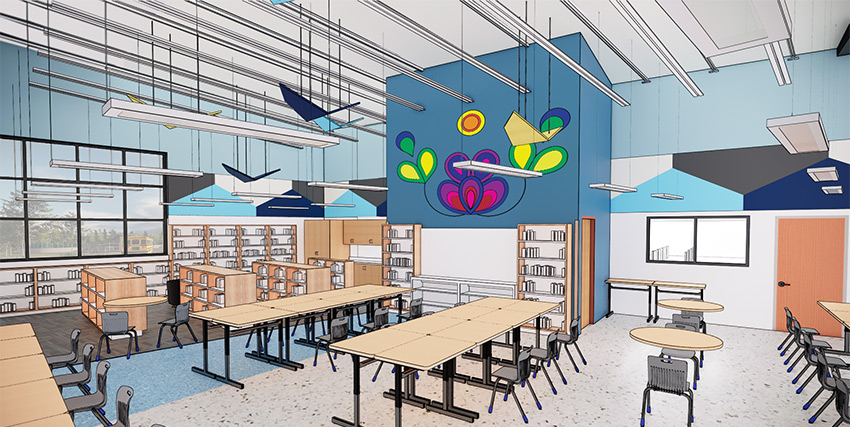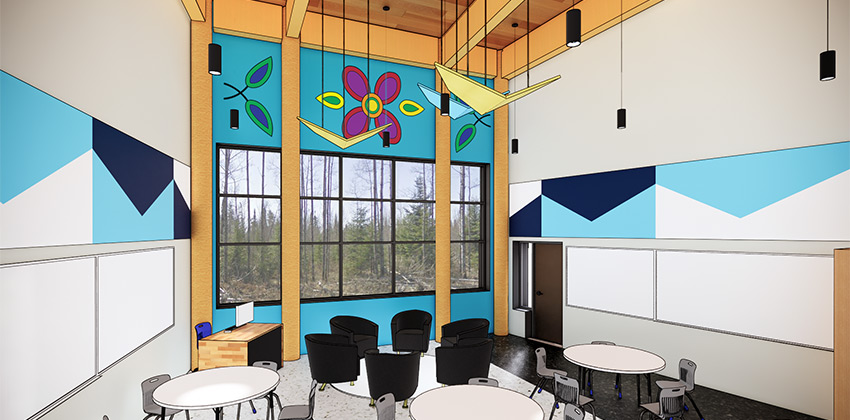By Caroline Bosc, Professional Interior Designer
Signage exists everywhere in our world. You see it when you drive down the street, you read it as you walk through malls and airports. It is in our grocery stores, in our workplaces, and it is most definitely in our schools.

Often when we are asked to design schools, the interior and exterior signage package is a big component of the project. Ultimately, it is what helps students, teachers, parents, and visitors navigate what are usually very large buildings. Signage in schools offers a unique opportunity to not only be functional but to also be educational. If students are already looking at it, why not take the chance to use signage as a teaching tool.
When we talk about interior signage, what we are referring to is everything from classroom signs, to building directories, wayfinding signs, and large-scale graphics.
Recently, I had the opportunity to work on a school for a First Nations Group in Northern Manitoba. The goal for the school, a large Kindergarten to Grade 12 building, was to not only create a learning space for the community and surrounding areas but to also create a place for gathering. The idea of the building serving a dual purpose – one for learning and for community – sparked a thought. What if signage can also have a dual purpose? In collaboration with the community’s Chief and Council, we decided we would use the interior signage to also teach the students about the culture and history of the community.
For this particular project, it was decided that each area of the school would have a theme, with designs based on a clan significant to their culture. From there, we used clan images and colours to create a wayfinding system that would help the building’s users navigate the school more easily. To compliment this, signs were designed specifically for teachings, providing more insight into the history of each clan and why they are important. It was also important to the community’s Chief and Council that the school signage be used to honour elders and families within the community; keeping that in mind each room within the school was dedicated to a significant community member.

When it came to the large-scale graphics, we were honoured to be lent a whole package of beadwork patterns used by the community elders that we turned into digital images and placed in significant areas of the school.


The process of working through this signage package with the community, Chief and Council, as well as my colleagues was as much of a learning experience for me as it hopefully will be for the students at the new school. It gave me an opportunity to learn about a rich culture that is not my own, and I am grateful that I was able to take part in the experience. Children and youth learn as much through interacting with their environment as they do in a formal classroom. By carefully crafting educational environments - yes even down to the very last sign - we as designers can create a richer and more supportive environment for students, parents, teachers, and staff.
 Caroline is an Interior Designer at Number TEN Architectural Group
Caroline is an Interior Designer at Number TEN Architectural Group

